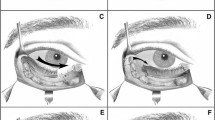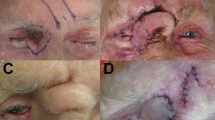Abstract
By using an extended coronal flap or ”dismasking flap,” a large area of the cranio-orbitofacial region can be viewed directly. To achieve this, the supraorbital nerves must be sectioned. The sensory recovery in the forehead of patients treated with ”dismasking flaps” was studied as was that in normal adult controls. In the patient who had nerve anastomosis, the Semmes-Weinstein (S-W) test result was 2.36 monofilament number (follow-up period: 9 months). Static 2-PD and moving 2-PD were 15 and 14 mm, respectively. In the patients who did not have nerve anastomosis, the mean S-W test result was 5.46 (n=10, mean follow-up period: 25 months). Five points in three patients showed no recovery of static and moving 2-PD,and two points in two patients showed 25 and 22.5 mm, respectively. Of the patients whose nerves were resected, two did not show recovery of the S-W test results, and one patient showed 6.45 (mean follow-up period: 19 months ). In conclusion, the supraorbital nerve should be anastomosed to obtain good sensory recovery.
Similar content being viewed by others
Author information
Authors and Affiliations
Additional information
Received: 12 July 1999 / Accepted: 11 October 1999
Rights and permissions
About this article
Cite this article
Ueda, K., Tajima, S., Oba, S. et al. Recovery of forehead sensation after extended coronal flap or ”dismasking flap”. E J Plastic Surg 23, 146–149 (2000). https://doi.org/10.1007/s002380050235
Issue Date:
DOI: https://doi.org/10.1007/s002380050235




